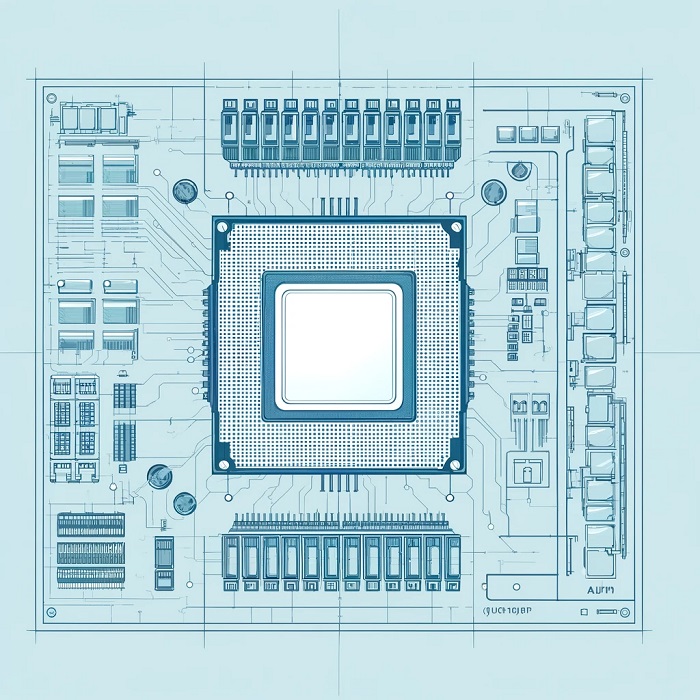ARM64 Architecture: An In-Depth Overview
Introduction
The ARM64 architecture, also known as AArch64, is a 64-bit extension of the ARM architecture. Developed by ARM Holdings, it represents a significant evolution from the earlier ARM32 architecture (AArch32). ARM64 is widely used in various applications, ranging from smartphones and tablets to servers and supercomputers. Its design focuses on energy efficiency and performance, making it a popular choice in the tech industry.
Historical Context
ARM Holdings, originally known as Acorn Computers, developed the first ARM processor in the 1980s. ARM architecture has undergone numerous iterations, evolving from ARM1 to the advanced ARM64. The ARM64 architecture, introduced in 2011, marked a major shift, offering a 64-bit instruction set and addressing capabilities that significantly enhanced performance and memory utilization.
Architectural Overview
The ARM64 architecture is designed to support 64-bit processing, which allows it to handle more data at once and address larger amounts of memory compared to its 32-bit predecessors. Key features of ARM64 include:
- Instruction Set Architecture (ISA): ARM64 supports both A64 (64-bit) and A32 (32-bit) instruction sets, ensuring backward compatibility with existing 32-bit applications.
- Registers: ARM64 has 31 general-purpose registers (x0 to x30), each 64 bits wide, and a dedicated stack pointer (SP). It also includes a program counter (PC) and a link register (LR).
- Data Processing: The architecture supports advanced SIMD (Single Instruction, Multiple Data) and cryptographic extensions, which enhance performance in multimedia and security applications.
- Virtual Memory: ARM64 uses a 48-bit virtual address space, providing ample room for large-scale applications and operating systems.
Key Features
- Energy Efficiency: ARM64 is renowned for its power efficiency, making it ideal for mobile and embedded devices. Its architecture minimizes power consumption while maintaining high performance.
- Scalability: ARM64 can scale from small, low-power devices to high-performance computing systems. This scalability has made it a favorite in diverse markets, from IoT devices to data centers.
- Security: ARM64 incorporates several security features, such as TrustZone, which provides a secure environment for sensitive operations, and Pointer Authentication, which helps prevent code injection attacks.
- Parallelism and Multithreading: ARM64 supports out-of-order execution and advanced branch prediction, enhancing parallelism and multithreading capabilities. This improves overall system performance, especially in multi-core configurations.
Use Cases
- Mobile Devices: ARM64's power efficiency and performance make it the dominant architecture in smartphones and tablets. Leading mobile processors, like Apple’s A-series and Qualcomm’s Snapdragon, are based on ARM64.
- Servers and Data Centers: ARM64 is gaining traction in servers and data centers due to its scalability and energy efficiency. Companies like Amazon Web Services (AWS) offer ARM-based instances, such as the Graviton processors, to optimize cost and performance.
- Embedded Systems: ARM64 is widely used in embedded systems, including automotive, industrial automation, and IoT devices. Its low power consumption and robust performance are key advantages in these applications.
- High-Performance Computing (HPC): ARM64 is making inroads into the HPC market. The Fugaku supercomputer, one of the world’s fastest, is based on ARM64 architecture, showcasing its potential in demanding computational tasks.
Technical Details
- Memory Model: ARM64 features a relaxed memory model, allowing for efficient memory accesses and parallelism. It uses a Translation Lookaside Buffer (TLB) to speed up virtual-to-physical address translation.
- Instruction Pipelining: ARM64 employs deep instruction pipelines to enhance instruction throughput. The pipeline stages include fetch, decode, execute, and write-back, among others.
- Cache Hierarchy: ARM64 processors typically include multiple levels of cache (L1, L2, and sometimes L3) to reduce latency and improve data access speeds. The architecture supports both inclusive and exclusive cache policies.
- Exception Handling: ARM64 supports various exception levels (EL0 to EL3), which define different privilege levels for handling exceptions and interrupts. This allows for robust and flexible exception management.
Development Ecosystem
The ARM64 architecture is supported by a rich development ecosystem, including tools, libraries, and frameworks. Major operating systems like Linux, Android, and Windows have ARM64 versions, ensuring broad software compatibility. Development tools, such as GCC, LLVM, and proprietary compilers from companies like ARM and Microsoft, provide robust support for ARM64 programming.
Future Prospects
The future of ARM64 looks promising, with continued advancements in performance, power efficiency, and security. Emerging technologies like 5G, artificial intelligence, and edge computing are driving demand for ARM64 processors. Additionally, ARM Holdings' acquisition by NVIDIA is expected to further accelerate innovation and integration of ARM64 in various markets.
Challenges
Despite its many advantages, ARM64 faces challenges. The transition from x86 to ARM64 in certain markets, such as desktops and laptops, is gradual due to software compatibility and optimization issues. Moreover, competition from other architectures, like RISC-V and x86, remains intense. However, ARM64's unique combination of power efficiency and performance continues to make it a strong contender.
Conclusion
The ARM64 architecture represents a significant leap in computing, offering a powerful and efficient solution for a wide range of applications. Its design, focused on energy efficiency, scalability, and security, has made it a leading choice in the tech industry. As technology continues to evolve, ARM64 is poised to play a crucial role in shaping the future of computing, driving innovation across diverse fields and applications.


